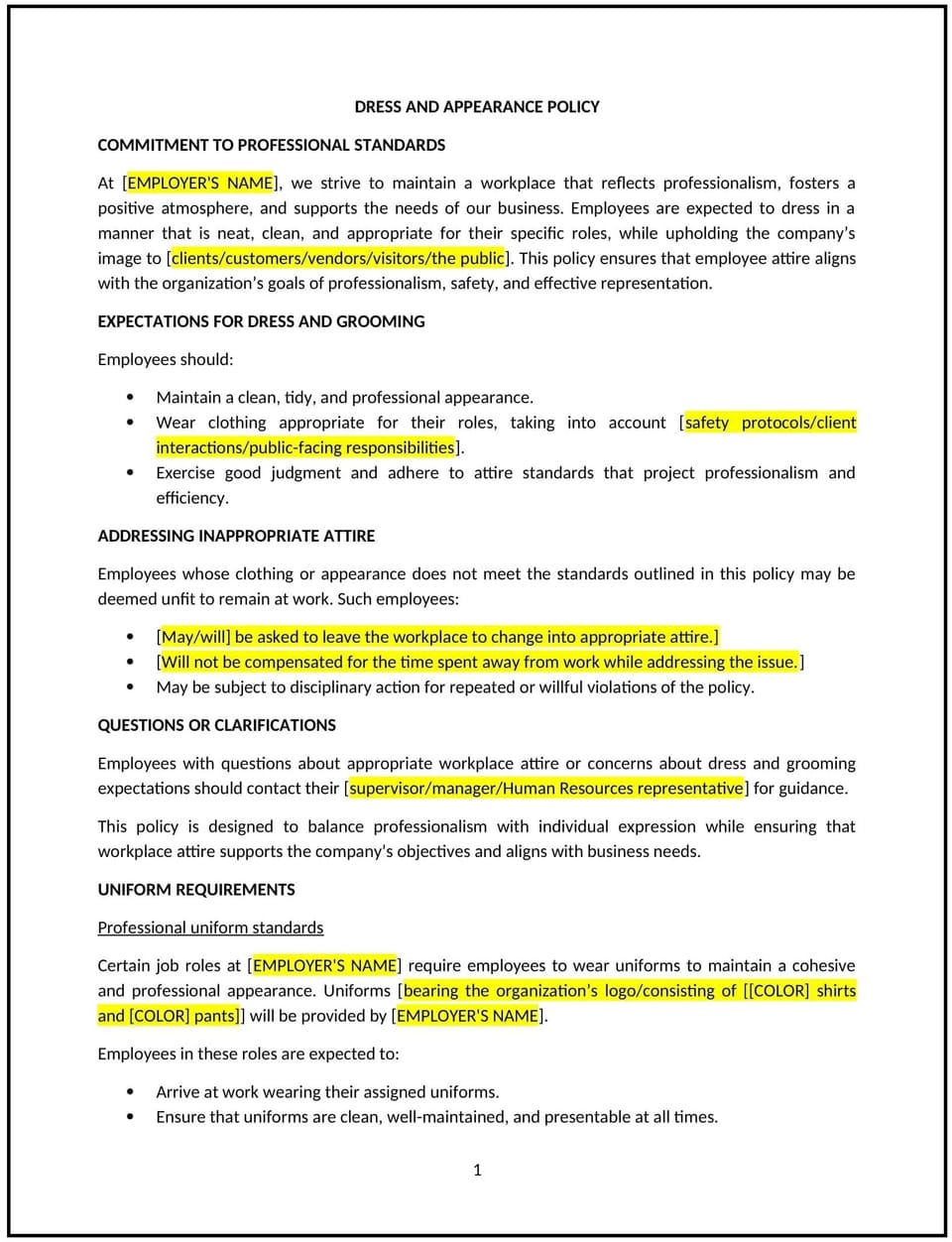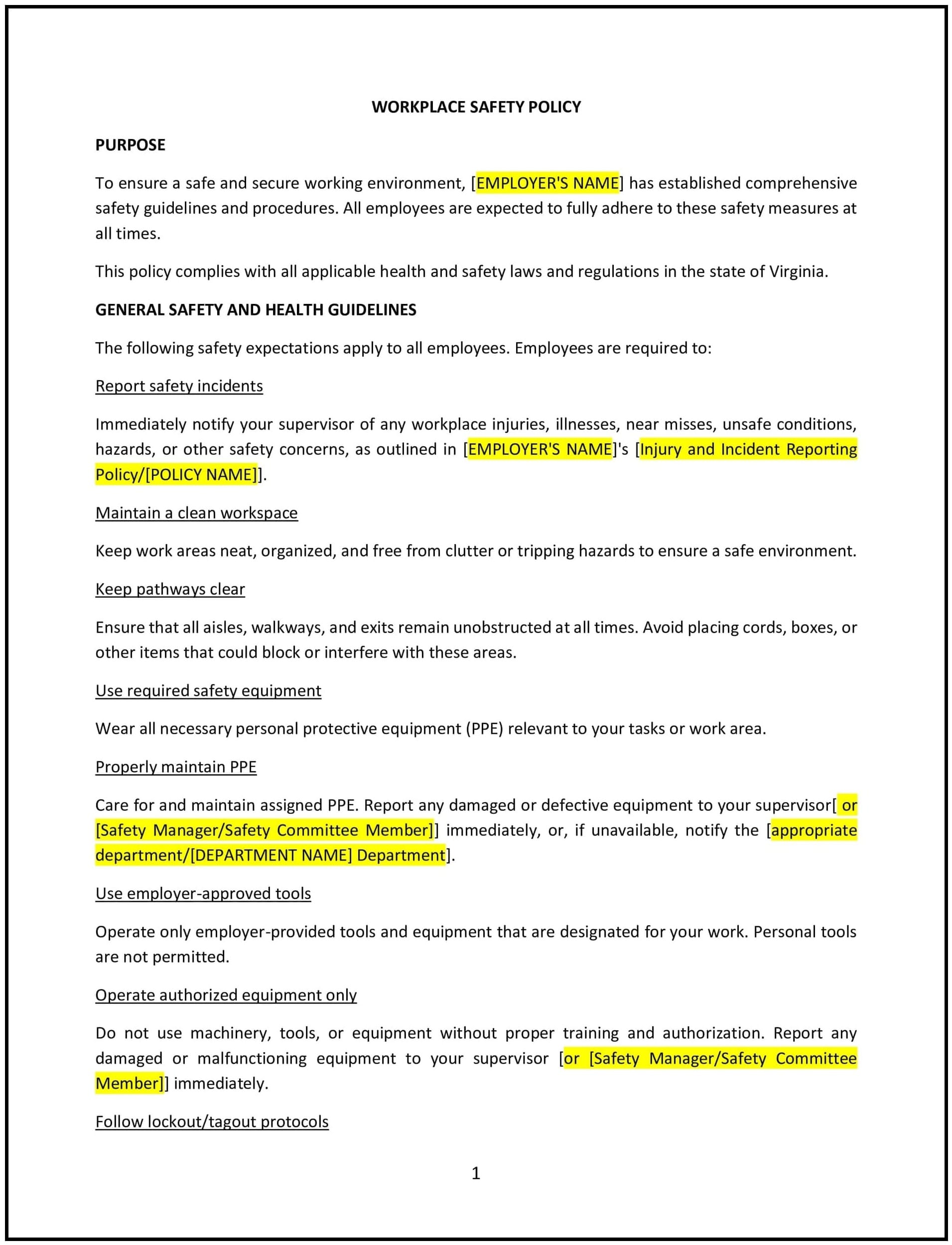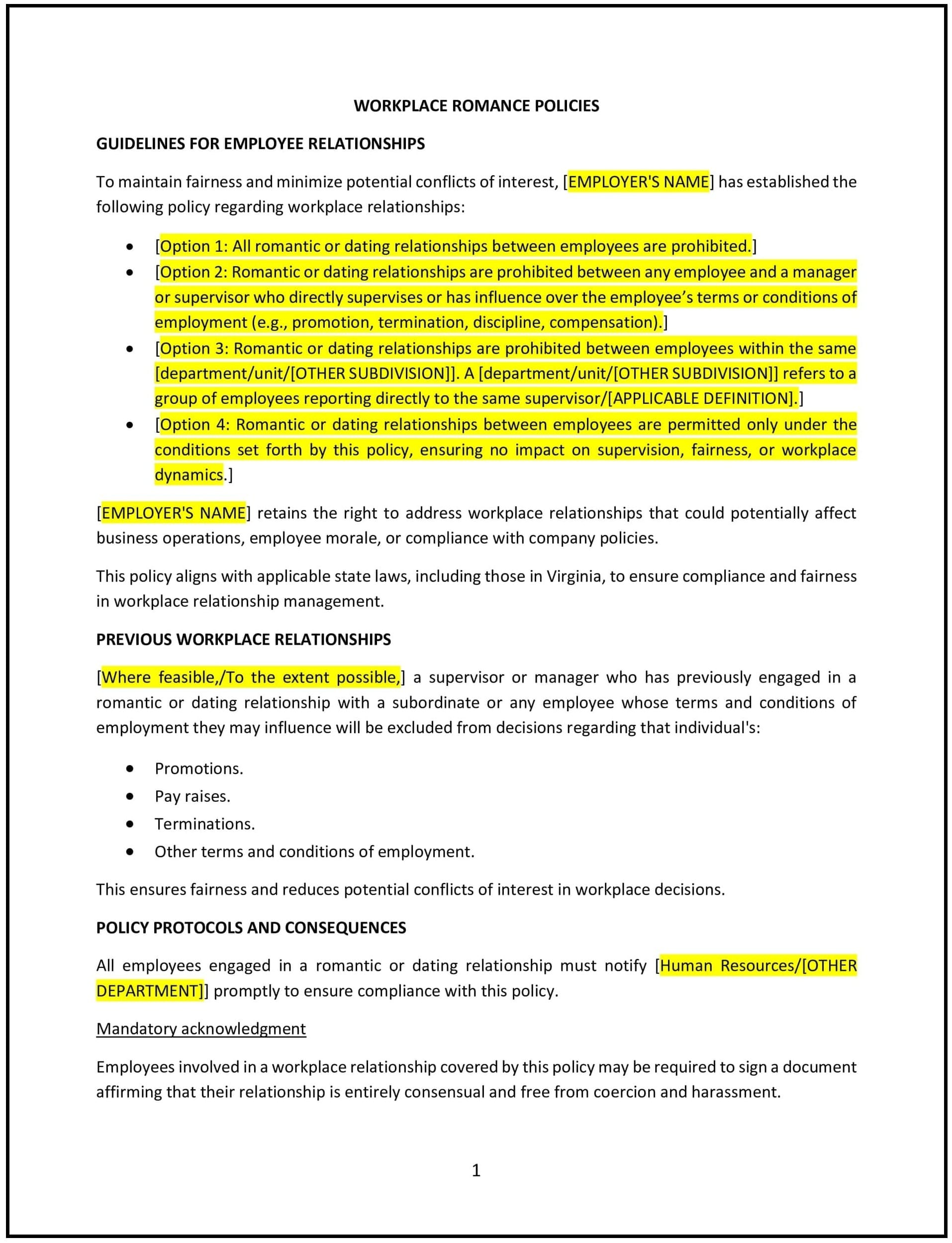Dress and appearance policy (Utah): Free template

Dress and appearance policy (Utah)
This dress and appearance policy is designed to help Utah businesses establish guidelines for employee attire and grooming to maintain a professional and safe work environment. It outlines expectations for workplace dress codes, including industry-specific requirements and safety considerations.
By adopting this policy, businesses can promote professionalism, ensure safety, and align with general best practices for workplace appearance standards.
How to use this dress and appearance policy (Utah)
- Define dress code: Specify the expected attire for employees, such as business casual, formal, or uniform requirements.
- Address safety considerations: Outline any safety-related dress requirements, such as protective clothing or closed-toe shoes.
- Include grooming standards: Provide guidelines for personal grooming, such as hygiene, hairstyles, and facial hair.
- Allow flexibility: Consider exceptions for religious, medical, or cultural reasons, where appropriate.
- Communicate expectations: Share the policy with employees during onboarding and include it in the employee handbook.
- Monitor compliance: Regularly review employee attire and grooming to ensure adherence to the policy.
- Review and update: Assess the policy annually to ensure it aligns with evolving workplace standards and business needs.
Benefits of using this dress and appearance policy (Utah)
This policy offers several advantages for Utah businesses:
- Promotes professionalism: Ensures employees present a professional image to clients and customers.
- Enhances safety: Reduces workplace hazards by enforcing safety-related dress requirements.
- Aligns with industry standards: Provides clear guidelines that reflect industry-specific expectations.
- Supports inclusivity: Allows flexibility for religious, medical, or cultural considerations.
- Reduces conflicts: Clarifies expectations to minimize misunderstandings or disputes.
Tips for using this dress and appearance policy (Utah)
- Communicate the policy: Share the policy with employees and include it in the employee handbook.
- Provide examples: Offer visual examples or descriptions of acceptable attire to clarify expectations.
- Address exceptions: Be transparent about how exceptions for religious, medical, or cultural reasons will be handled.
- Monitor compliance: Regularly review employee attire and grooming to ensure adherence to the policy.
- Update regularly: Assess the policy annually to ensure it aligns with evolving workplace standards and business needs.
Q: How does this policy benefit businesses?
A: By setting clear dress and appearance standards, businesses can promote professionalism, enhance safety, and reduce workplace conflicts.
Q: What should businesses consider when creating a dress code?
A: Businesses should consider industry standards, safety requirements, and employee comfort when creating a dress code.
Q: How can businesses handle exceptions to the dress code?
A: Businesses should allow flexibility for religious, medical, or cultural reasons and handle exceptions on a case-by-case basis.
Q: What should businesses do if an employee violates the dress code?
A: Businesses should address violations promptly, provide reminders of the policy, and enforce consequences if necessary.
Q: How often should businesses review this policy?
A: Businesses should review the policy annually or as needed to ensure it aligns with evolving workplace standards and business needs.
This article contains general legal information and does not contain legal advice. Cobrief is not a law firm or a substitute for an attorney or law firm. The law is complex and changes often. For legal advice, please ask a lawyer.


